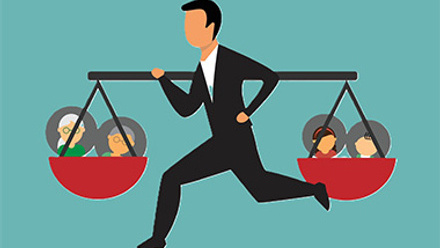3 ways to support men’s mental health in your workplace
Despite changing societal attitudes towards mental health, persistent stigmas and stereotypes make it challenging for men to seek and receive mental health support.
Fixed ideas around what it means to be ‘manly’ and who is ‘allowed’ to be vulnerable have created a hesitancy. Sometimes this means help arrives too late – suicide is the single biggest killer of men under 45 in the UK. Men are nearly three times as likely as women to die by suicide or become dependent on alcohol or drugs. But somehow, only 36% of NHS referrals for talking therapies are for men.
While more research is needed, the tendency to access care late or not at all seems likely to play a substantial role in the progression from mental health struggle to crisis. But mental health professionals cannot predict (or prevent) a mental health crisis in patients they’ve never treated. To truly transform men’s mental health, large-scale, systemic change will be needed, and it won’t happen overnight. So what can employers do to better support men’s mental health?
1. Create a safe space for mental health talk at work
Make your workplace an environment where people of all genders can speak freely about their struggles. By sharing how they’re feeling and what they’re doing to support their own mental health, line managers and leadership can encourage employees to ask for help when they need it. Studies in the US show that men respond particularly well to information conferred by role models, so leading by example may prove particularly effective with men on your team.
2. Signpost to available services and resources
Men have been shown to be statistically less inclined to use mental health services and ask for help. This means ensuring they are aware of services isn’t enough. To improve take-up, you’ll need to carefully craft your messaging to address and reduce any stigma associated with accessing care. You’ll also want to ensure that resources offered are easy to access and discreet. Self-guided mobile-first solutions may be particularly effective in reducing the embarrassment factor for many men, particularly those in the underserved middle. These men, who fall somewhere between mentally healthy and mentally unwell, may not yet need or want face-to-face specialist services, but can still benefit from expert guidance to help them manage their mental health and wellbeing.
3. Make sure team leads know how to spot the signs
Research points to significant differences in mental health coping strategies between men and women. Men are more likely to self-medicate with drugs and alcohol and present with non-conforming mental health symptoms, such as irritability and aggressive behaviour. These behaviours may mask symptoms typically associated with and used to diagnose mental health conditions like depression. To ensure no one slips through the cracks, employers may want to offer line managers training to recognise signs of mental ill health and tips on how to best offer assistance.
To find out more on how to support mental wellbeing for your workforce, download How to overcome barriers to employee mental health.
Supplied by REBA Associate Member, Koa Health
At Koa Health, we believe digital mental health solutions are the answer to mental health issues.








